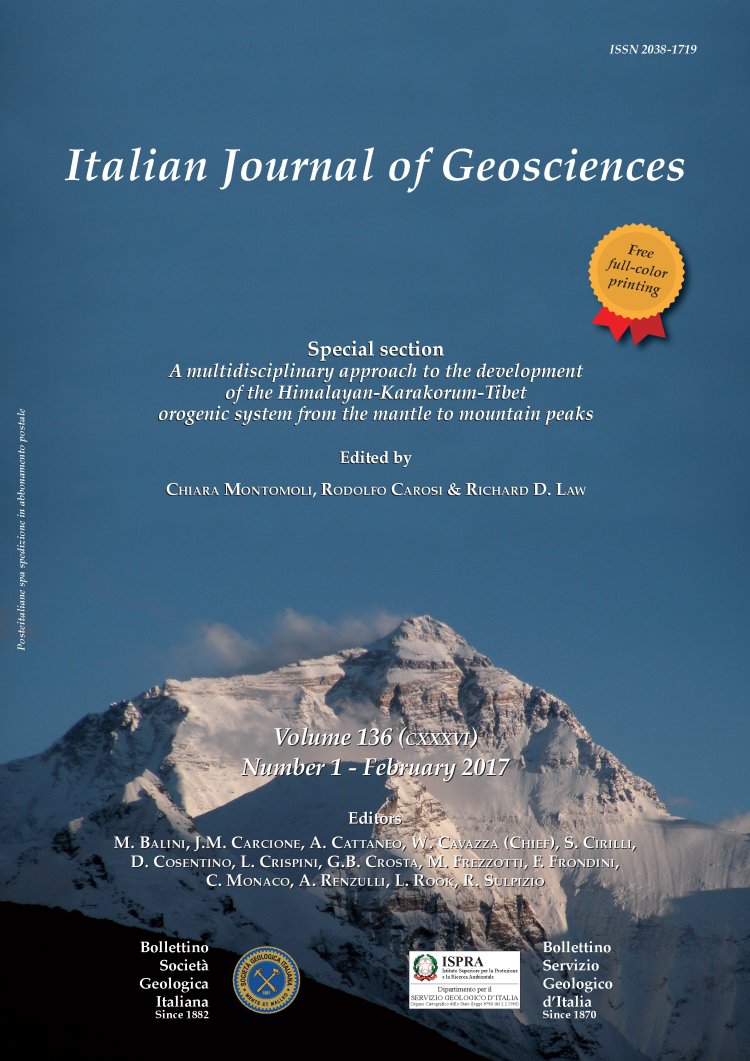
Metamorphic CO2 production in calc-silicate rocks from the eastern Himalaya
Franco Rolfo (*,**), Chiara Groppo (*,**) & Pietro Mosca (**)
(*) Department of Earth Sciences, University of Torino, Italy. Corresponding author e-mail: franco.rolfo@unito.it.
(**) IGG - CNR, Torino, Italy
Volume: 136 (2017) f.1
Pages: 28-37
Abstract
Metamorphic degassing from active collisional orogens may supply a significant fraction of the global solid-Earth derived CO2 to the atmosphere, thus playing a fundamental role even in today's Earth carbon cycle. The Himalayan belt, a major active collisional orogen, is a good candidate for the production of large amounts of metamorphic CO2 that may influence the long-term climate. Metamorphic CO2 can be produced during prograde metamorphism of impure carbonate rocks. However, reliable quantitative modeling of metamorphic CO2 fluxes from the Himalayan belt requires a good knowledge of the nature, magnitude and distribution of the CO2-producing processes.
This study focuses on the metamorphic decarbonation processes occurring during the Himalayan collision, with special focus on the distribution of different types of metacarbonate rocks in the Eastern Himalaya and their petrographic description. Petrological data about selected CO2-producing reactions suggest that the most common calc-silicate rocks are potential great sources of metamorphic CO2, the molar amount of CO2 in the fluid ranging between 37 and 44 % in CFMAS-HC lithologies and between 21 and 57 % in NKCFMAS-HC lithologies. These results contribute to a better understanding of the influence exerted by orogenic processes on climatic changes at global scale.
This study focuses on the metamorphic decarbonation processes occurring during the Himalayan collision, with special focus on the distribution of different types of metacarbonate rocks in the Eastern Himalaya and their petrographic description. Petrological data about selected CO2-producing reactions suggest that the most common calc-silicate rocks are potential great sources of metamorphic CO2, the molar amount of CO2 in the fluid ranging between 37 and 44 % in CFMAS-HC lithologies and between 21 and 57 % in NKCFMAS-HC lithologies. These results contribute to a better understanding of the influence exerted by orogenic processes on climatic changes at global scale.
Keywords
Get Full Text